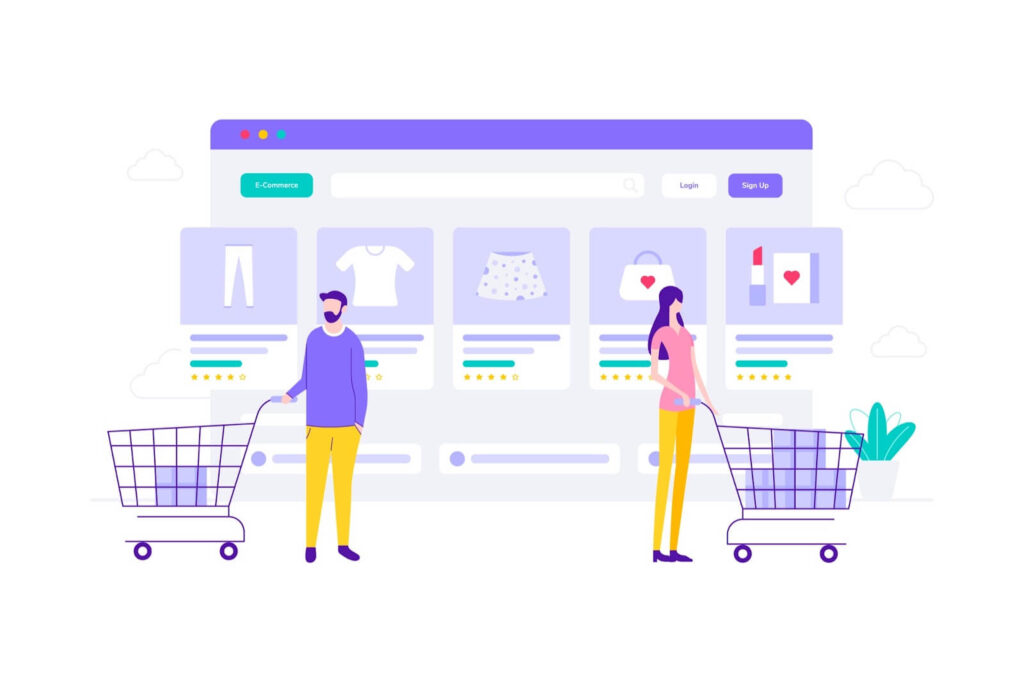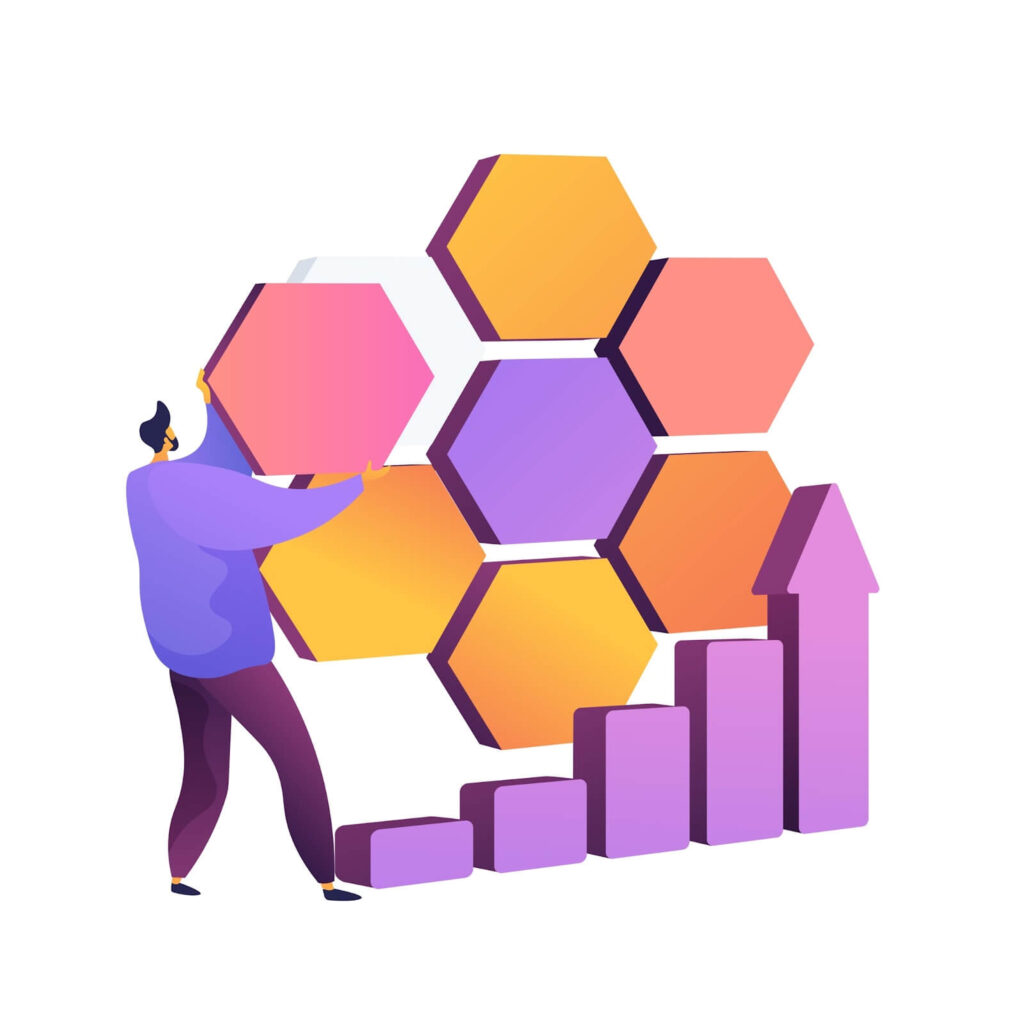February 25, 2022
How to Create a Marketplace App in 2022: Step-by-step Guide by interexy?
Table of content
- How to Create a Marketplace App in 2022: Step-by-step Guide by interexy?
- The Definition of a Marketplace Platform
- Why Should You Create A Marketplace App?
- How to make your own marketplace app?
- Types of Monetization
- Must-have features of marketplace apps
- UI/UX Design
- Technology Stack
- Required Team Structure
- Final Thoughts
- FAQs
The idea of marketplace app development has been a go-to option for some time. When these products appeared, they were highly valued among businesses. This is because they offer higher convenience to users who want to buy products or services online. Now with the tech advancements and COVID-19 impact, these platforms started gaining immense popularity among both companies and buyers. The Internet has made most daily things much easier for everyone, while marketplaces powered by various features allow clients to find what they came for and quickly get them delivered right to their door.
By performing a few clicks, your customers can find the best items and deals online while also purchasing any type of product, electronic gadgets, or furniture delivered to your doorstep. Anyone who runs a selling business understands the importance of a strong online presence. Therefore, a marketplace app requires considerable research and resources to achieve success.
Let’s take Airbnb, Aliexpress, Uber. At first glance, nothing common in these apps you won’t find. But if you look closer, you will soon understand that all of them can be considered marketplace platforms. Just imagine that in 2010 the investments brought to marketplace projects was $4B. However, in 2021 the amount reached $46b, where the US held the biggest share in this growth.
Just like with any app, there are several tricks that need to be considered during the development, as this industry requires knowledge. This is why we curated this article to highlight the main stages of building a marketplace app that leads to a successful application. So let’s start from the basics!
The Definition of a Marketplace Platform
Since we live in a challenging time, businesses should know ways to protect their processes and minimize the loss. While employees lose their jobs, business owners are always trying to stay in demand. Marketplaces could become a great option for every company that still wants to provide its services and avoid the breakdown of the business.

Marketplaces have brought a serious buzz after successful examples of them became in demand and highly popular among consumers. A marketplace refers to an independent platform that works online, having the main purpose of connecting customers and sellers directly. However, to survive among a wide range of competitors, the marketplace has to provide the most quality security features for Fraud Detection, a number of features, and the transparency of a deal for each side. Therefore, you should always consider this if you want to create a marketplace platform.
Why Should You Create A Marketplace App?
Now is the best time to build a marketplace app. In 2020, the total revenue spent on the top 100 online marketplaces reached $2.67 trillion. Experts believe that by the end of 2024, marketplace sales will exceed $7 trillion.
One of the main reasons why marketplace apps are so popular primarily lies in the new channels the marketplace provides. This is because marketplaces don’t require initial inventory, so they can be successfully built for almost any niche and can significantly grow through networks.
At the same time, the drive of the marketplaces also depends on consumers who prefer mobile apps. For instance, in 2020, on average, users spent over 3 hours on these platforms every day. Below we will show reasons why you should consider building a marketplace app.

User Base
In contrast to traditional resellers, with a marketplace, your user base will consist not only of consumers but also sellers. In order to gain popularity and overcome competitors, you will need to satisfy the needs of both sides. Even though this will require time and resources, you will gain much higher value than being a traditional reseller. These apps provide a significantly bigger target audience and user base you can use for your purposes and marketing campaigns.
Growth Potential
One of the key reasons for the popularity of the marketplace is their business channels and opportunity to grow exponentially. Since the platform performs a transaction instead of taking part in it, it won’t be necessary to increase the labor force depending on the number of transactions. While the product sold within the marketplace isn’t made, packed, and delivered directly by the team, you will only need resources for platform maintenance.
No Inventory
As we mentioned earlier, a marketplace only connects buyers and sellers; there is no necessary thing known as inventory. And most businesses love this point about running such platforms. For example, with an e-commerce app, you won’t be able to sell all the products you have in stock. Therefore, no inventory saves you money regarding transportation, storage, and development costs.
How to make your own marketplace app?
Before starting building, you will need to perform an in-depth analysis to identify competitors and types of marketplaces. They are usually divided into the following categories:
An offering type
Here you will need to consider what your providers are going to offer as it impacts on features you need. A marketplace that offers rentals (Airbnb is the brightest example) or services (like Fiverr) will require you to craft a booking calendar, location search, and user profiles.

Audience type
Since every target audience needs specific features, here, you will need to learn more about your prospective users and what they are looking for. Examine various peer-to-peer marketplace, where users like to complete their profiles, two-sided reviews, and fast, secure payments.
Booking flow type
With this type, the design will play almost the main role in the success and features your app will need. Are clients looking for providers, or do the customers place jobs? Consider whether the price will be fixed or negotiated? The best way to learn how booking flow types work is to look at how different platforms relate to pricing, location, and schedule.
Types of Monetization
1. Commission
If your marketplace provides commercial transactions that will happen directly on the platform, then a commission might be the best option for the app’s monetization. Some of the most popular marketplace platforms worldwide, like Booking.com, eBay, Etsy, and even Uber, make a great revenue out of this business model.
2. Listing Fees
Additionally to charging a transaction-based fee, many marketplaces (also eBay, Etsy, and Delivery Hero) also like to use listing fees. This simply means a fee charged for placing your product/service available on the marketplace. However, in order to use listing fees, a marketplace requires a large size, so it would be hard for suppliers to ignore it.
3. Premium Listings
Some marketplaces like to use a model where they charge fees for promoting vendors’ offerings visibility, most often by allowing them to rank much better. This is one of the most popular monetization strategies among classified platforms.
4. Variable premium listing fees
Some companies consider that it would be smarter for a commission or premium listing fees used by marketplaces to not be a fixed %-tage. This may provide variability and potentially maintain higher fees with extra services working as a good tactic.
Must-have features of marketplace apps
Secure Payments
Secure payments are essential not only for marketplace mobile apps but with any other platform that performs transactions. This is because your product will highly likely be prone to data losses and hacks without proper security while also affecting the reliability and credibility of your company among your customers.
Push Notifications
This feature is a must-have if you want to keep your customers engaged. By adding push notifications, your customers will know more about daily promotions & updates that prompt users to take actions like buying something or anything beneficial for your business purpose.

Social Logins
This will help your customers easily log in and get through the registration phase by using their social accounts. Integrating your app with social media will make it easier for the users to share the services or web pages on social media platforms.
Wish List
Even though it might not be an essential feature, it will allow customers to bookmark the products that they prefer to buy. A wish list may also help your clients keep informed regarding offerings that can be applied to the products. This feature makes targeting marketing better, therefore, helps you achieve a better conversion rate.
Reviews & Ratings
When building an app, you will need to ensure your platform provides users with a chance to leave reviews & rate listed products and services. Since reviews can convince others to buy a particular product, you will be able to make more sales while also improving the community around your products.
Order Tracking
Allowing your clients to track the orders through the mobile app not only helps boost the whole shopping experience but also takes the burden off your shoulders. This feature makes it easier for your team to perform the logistics.
UI/UX Design
When you are done with the strategy, analysis, and product concept, you will require an experienced team of UX/UI designers. It is essential to make sure every member has relevant experience and they all easily come along for a smooth workflow. Don’t skip this stage of the development, as great design plays a key role in the app’s success. The visibility of your service and how it will look may determine the first user’s experience.
Technology Stack
Once you have a design approved by you, you can start the development. First of all, create a team of several front- and backend developers. It is essential to choose the right language as your team should be familiar with it and with the libraries it offers. You can choose from Ruby, PHP, JavaScript, Python, Java, Clojure, or any other language your team suggests.

Then learn more about frameworks and choose one that suits you best. There are lots of features you will need to craft the marketplace backend that the frameworks handle for you, such as:
- Authentication and web security
- HTTP request/response handling
- HTTP request validation
- Routing
- Templating
- Error handling
- Logging
If you have chosen Ruby, Rails is the way to go. With PHP, Laravel is today the best one. When working with JavaScript, you might consider Express.js.
Required Team Structure
When building a marketplace app, you have two options – craft your team by hiring one by one expert by using staff augmentation services or partnering with a full team. Even though the team structure depends on the app’s complexity, budget, and timelines, it usually consists of the following members:
Project Manager
This person is responsible for tracking developers and designers, allowing you to rest assured everything is in check and informing you about all stages of the process.
Business Analyst
Once the project manager sets up the team and resources required, the business analyst will create a detailed specification with all costs needed for your product.

UX/UI Designers
It could be either one or two people who will create the product’s design and make it more understandable for the development team.
Front and Backend Developers
Such platforms usually require two engineers for both sides to ensure stable code and higher product efficiency.
QA Team
Without proper testing, you will likely face many challenges when launching the app and when delivering it to customers. Interexy team can provide you with all required resources, as we are highly experienced with such products and are happy to help you realize any idea.
Final thoughts
Whether you are just looking for in-demand areas for development or consider building your marketplace, this guide can help you identify the most vital features, steps, and team needed for your success. Marketplaces are a great way to support your business and get a higher venue during these challenging times. Let’s discuss your idea with our team!
FAQs
What are marketplace apps?
An application marketplace represents an online store where users can go in order to find and purchase various items. A wide range of products is available on marketplaces.
What are the main types of marketplaces?
Marketplaces are divided into three main categories when focusing on their target audience. They include business-to-business (B2B), business-to-customer (B2C), and peer-to-peer (P2P), also known as customer-to-customer (C2C).
How Do I Monetize A Marketplace App?
There are many ways you can monetize your marketplace. The main options include commission, listing fees, premium listings, and variable premium listing fees.
















